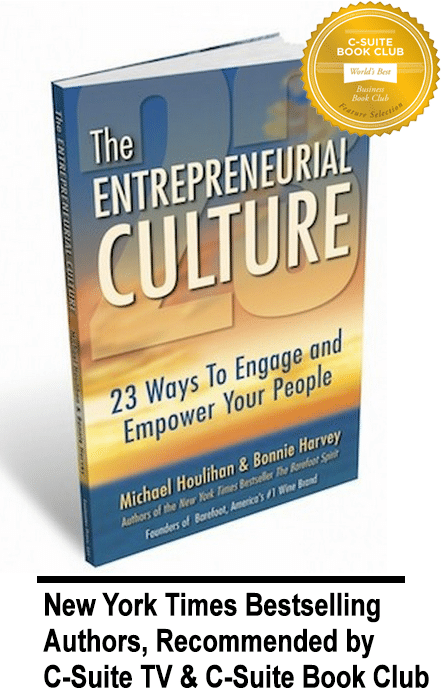
But wait, no time for celebration! Soon you realize that those same big customers you have grown to rely on have you over the barrel. They can dictate prices and threaten to discontinue your products and services, thus putting you out of business! You are at their mercy. So, you decide to mitigate your risk by attracting new customers and expanding your territory. This is the critical build-out stage where many businesses fail. It’s not the cost of goods that kills them, it’s the cost of sales! These are all the new costs that reveal themselves as you begin to service your new sales.
One of those new costs is the cost of an outside sale representative. As you expand, you realize that you simply can’t be everywhere. So you delegate the sales and service process to a new person in a new territory. Who is that person? How do you find them? And more importantly, what do they do? You not only have to be very clear about their responsibilities, but you have to develop a performance-based compensation plan.
Let’s unpack these three critical questions in reverse order:
What is the real job?
Let’s start with a critical distinction between what you may think the job is and what it must be in order to be effective. And what is effective? It’s a combo of sales, growth, and profitability. Obviously, if they are not making and maintaining sales in units or in dollars, you lose. If you just sell the same, year on year, you are not growing and you lose. If you grow because your new rep sells your products at too low a price or spends too much in promo dollars and you are therefore not profitable, again, you lose.
In our case, expanding into new territories taught us a painful lesson or two. Maintaining sales was much harder than getting them in the first place. The amount of handholding and actual execution of the nitty-gritty work that we thought the distributor and retailer would do, fell on us. We just didn’t know it starting out. We erroneously thought that other businesses we sold our products to would have a financial incentive to promote and maintain our product because, we thought, it was making them money. We never imagined the real work that made the big difference in the success of our brand.
When people ask us the one thing that was responsible for our success (as if there was only one thing!), we engage them with an answer they don’t want to hear or know about. Our success was a direct result of hands-on merchandising at the store level, period. Now, what if we hired a sales rep who presented themselves as an ambassador. You know, just talk to people, take them to lunch, and do some training? We made that mistake more than once!
Finally, we realized the real job that had to be done, the job that nobody was going to do but us and our company. Now, we had a much different idea about what was needed. Now we knew what we were looking for! We needed someone who would do the dirty work and pick up the slack when and where other’s had failed. We needed a sales rep who was willing to not only ask for the order, but make sure it was delivered on time, priced right, and on the shelf. In other words, more of a policeman and a merchandiser!
How do you find them?
Well, running an ad seemed like a no-brainer, but that only got us everyone who was unemployed or unemployable. Ads may get a jewel once in a while, but you will have to go through tons of applicants. Here’s how we found our best people. We went right to the prospective buyers in the new territory. We asked them who was their favorite sales representative and why? We also went to the store level and asked the clerks who they liked as an outside rep and, again, why? This was quite an education in itself, but it also yield a few qualified candidates.
We found that there was only a few prospects who qualified for the real work at hand. We then had to figure out how to attract them to our team. They had to see our offer as a step up in their career, in both the areas of income and responsibility. We had to convince them that they would get credit for building our brand and share in our success in their territory. Sure, we have to do our due diligence, tons of training, and give them a trial period to prove themselves, but at least we now had a person the buyers like!
How do you pay them?
This is the million dollar question, literally! Any outside sales rep is going to want a base salary that is guaranteed, no matter if they achieve a commission or not. Basically, you are out the base salary and expenses even if they don’t make a sale, even if they lose sales! Yikes! So how much is that? And how much can you afford out of pocket? For instance, can you afford to start multiple territories at the same time? Most businesses can’t so they borrow or trade equity to finance this expansion. And therein lies the big risk.
We had to start with just one new territory at a time. It had to pay for itself before we could afford to open another new territory. In other words, we cash-flowed our growth. The good news is that with the relative slow growth, the mistakes we made where relatively contained and manageable. We learned from them and improved in the next territory we opened.
The base guaranteed salary is already established by the market territory. You have to discover what that is. But be careful! If you pay too much of a guarantee, you may disincentivize your new rep from performing. If it is too low, you may not be able to attract them in the first place.
The portion of the reps’ income that is commission and bonus-based must address sales, growth and profitability – all three! This is a tricky balancing act. We recommend that no contract with any rep be longer than one year. During that year you will discover what’s wrong with your “best laid” plans and you can apply a patch it for next year. Work with your new rep to agree on the performance metrics of your compensation plan. Sales and profitability are relatively easy to measure and agree upon. But growth, that’s another matter.
We defined growth as an increase in sales year on year. In other words, what were the sales for the same month last year? And if they complained about an anomaly last year? We took the three month average of the month before the same month, the same month, and the month after and agreed that we would use that number. Now you can use that as a base line from which to measure growth. This is what worked well for us: it was a plan where, the more sales our rep made over baseline, the more each was worth. For example, sell 10 over baseline, they got $1 for each, or $10. Sell 20 over baseline, they got $2 each for a total of $40. Sell 30 over baseline, they got $3 each for $90.
This plan gave them a big incentive to grow the brand over same month last year. Sure, there were details and tweaks we had to add into the plan, but you get the picture.
We found that when you pay your reps right, the non-producers can’t afford to stay and the producers can’t afford to leave! Bottom line: Understand the real job and reward for performance!
Who We Are

Michael Houlihan and Bonnie Harvey co-authored the New York Times bestselling business book, The Barefoot Spirit: How Hardship, Hustle, and Heart Built America’s #1 Wine Brand. The book has been selected as recommended reading in the CEO Library for CEO Forum, the C-Suite Book Club, and numerous university classes on business and entrepreneurship. It chronicles their humble beginnings from the laundry room of a rented Sonoma County farmhouse to the board room of E&J Gallo, who ultimately acquired their brand and engaged them as brand consultants. Barefoot is now the world’s largest wine brand.
Beginning with virtually no money and no wine industry experience, they employed innovative ideas to overcome obstacles, create new markets and forge strategic alliances. They pioneered Worthy Cause Marketing and performance-based compensation. They built an internationally bestselling brand and received their industry’s “Hot Brand” award for several consecutive years.
They offer their Guiding Principles for Success (GPS) to help entrepreneurs become successful. Their book, The Entrepreneurial Culture: 23 Ways To Engage and Empower Your People, helps corporations maximize the value of their human resources.
Currently they travel the world leading workshops, trainings, & keynoting at business schools, corporations, conferences. They are regular media guests and contributors to international publications and professional journals. They are C-Suite Network Advisors & Contributing Editors. Visit their popular brand building site at www.consumerbrandbuilders.com.
To make inquiries for keynote speaking, trainings or consulting, please contact sales@thebarefootspirit.com.






